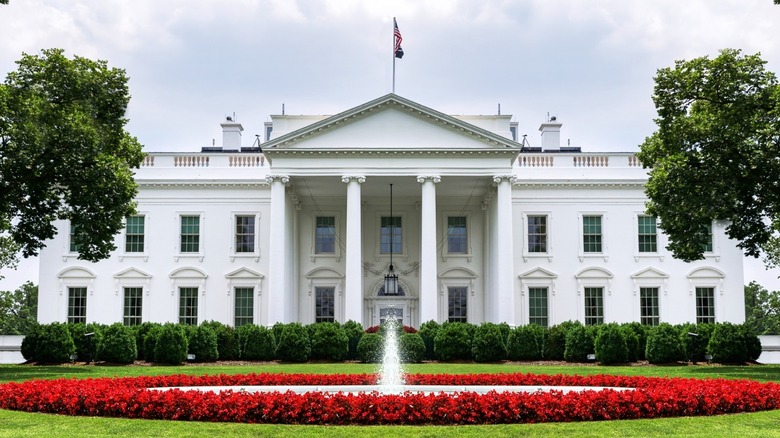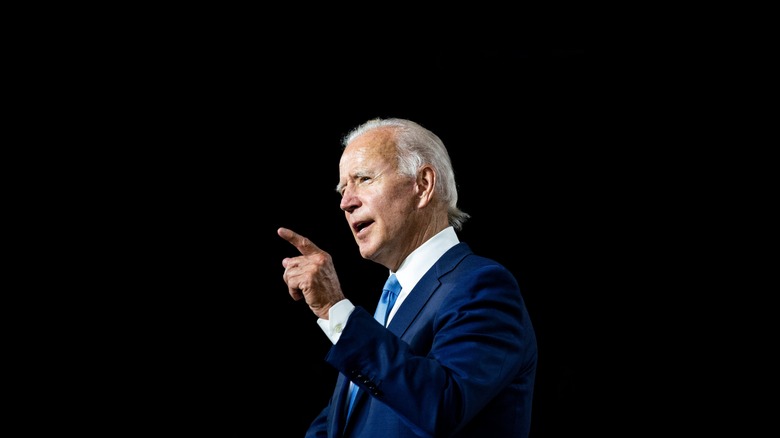How The White House Just Committed To Improving Food Policies
For the first time in 50 years, the White House will be convening a national conference to address food and nutrition issues in the U.S. President Biden announced the conference in a May 4, 2022 tweet via the White House Twitter account. The conference is scheduled for this September and will assemble a diverse group of food and nutrition experts, food companies, local and state governments, and tribal and territory community leaders.
The last time the White House held a conference on hunger and nutrition was in 1969, under President Nixon (via Tufts). The event led to the creation of enduring services like the School Breakfast Program and WIC (a nutrition program for women, infants, and children), and the expansion of others like SNAP and the National School Lunch Program. 50 years later, however, food scarcity and malnutrition are still endemic in the U.S.: according to the Congressional bill authorizing this year's conference, more than 38 million people in the US (about 1/3 of whom are children) currently live with food insecurity. And due to the pandemic, that number is projected to eventually hit 42 million — about one in eight people (via Feeding America).
What the White House Conference on Food, Nutrition, Hunger, and Health hopes to achieve
Food scarcity is only one of several matters to be addressed at the conference. Other pressing issues include: diet-related illnesses (which are on the rise and account for $160 billion per year in medical costs); the disproportionate effect of food insecurity and diet-related illnesses on racial and ethnic minorities; "hyper-consolidation" of wealth and resources in the food industry to the detriment of farmers; and food system security — a particularly of-the-moment topic, following pandemic-related supply chain disruptions (via congress.gov).
The conference has a number of specific research goals relating to these issues and outlines a timeline for achieving them. In addition to assessing the current state of America's food system and exploring its weaknesses — and its disparities along racial and geographic lines — the White House hopes to identify pathways to ending hunger in the US by 2030, halving nutritional insecurity by 2025, and halving diet-related illnesses by 2030.

